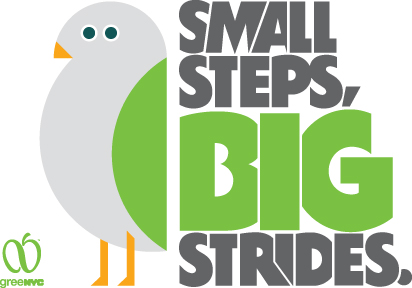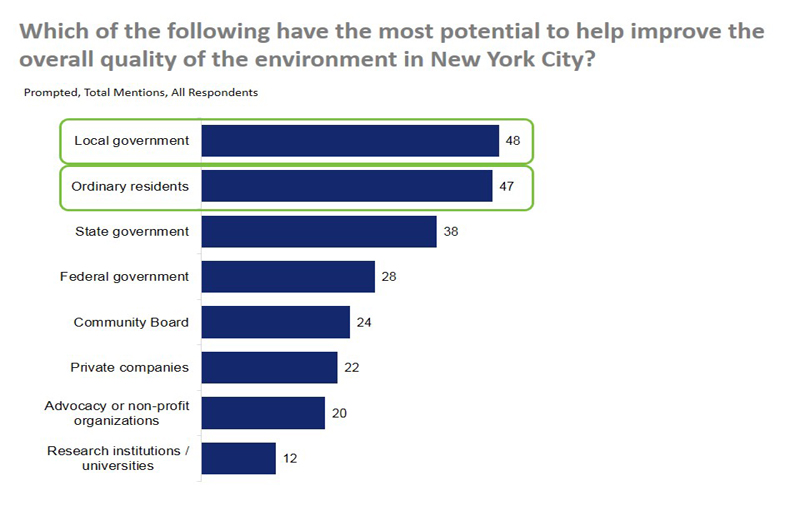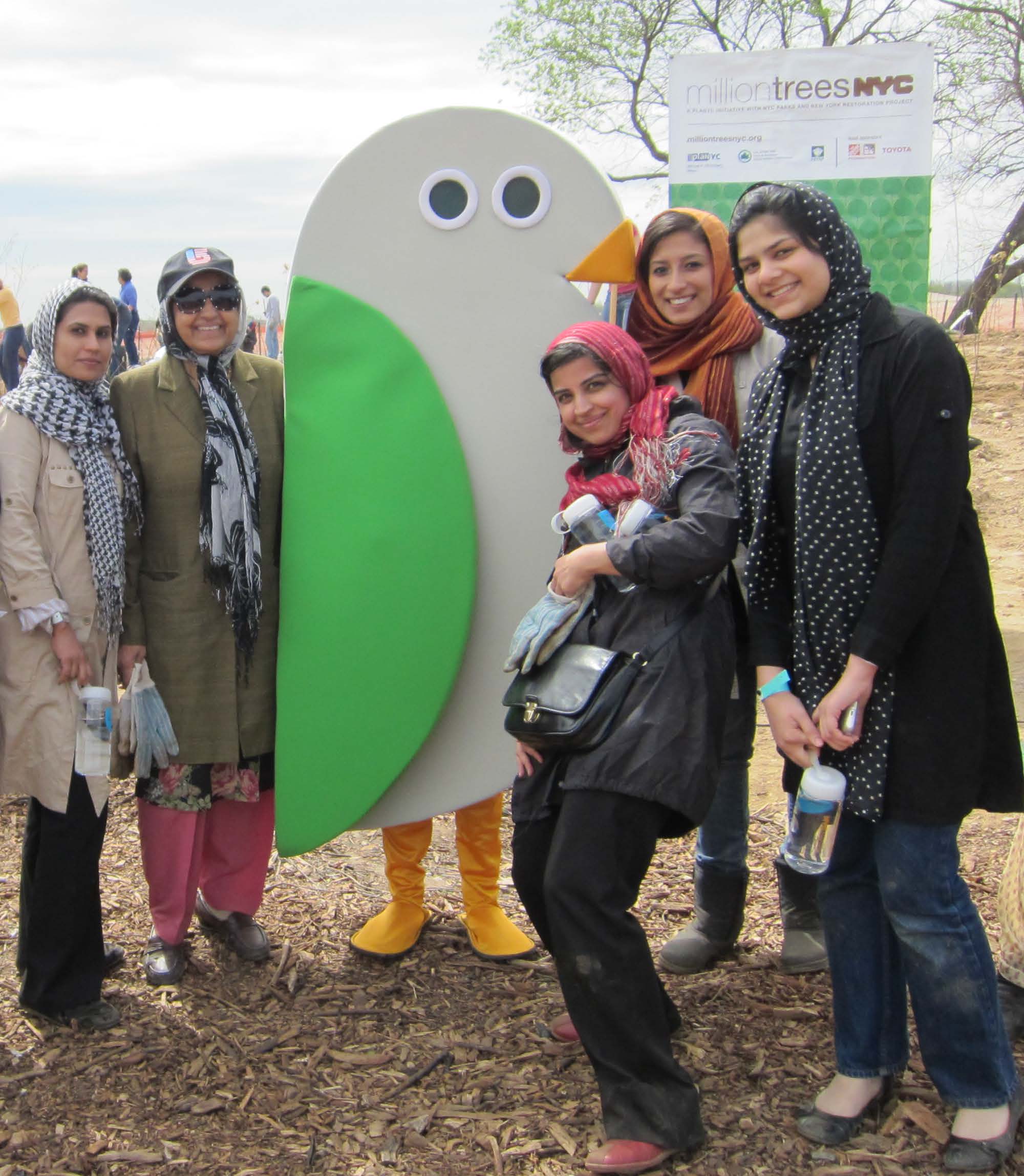
 Office of Climate and Environmental Justice311
Office of Climate and Environmental Justice311 Search all NYC.gov websites
Search all NYC.gov websites
GreeNYC

In April 2015, Mayor Bill de Blasio unveiled “OneNYC”, a comprehensive plan that establishes bold and specific targets for a strong, sustainable and resilient city. Among the ambitious goals laid out in the plan are sending zero waste to landfills and reducing waste disposal by 90 percent by 2030, reducing the city’s greenhouse gas emissions by 80 percent by 2050 and ensuring that New York City has the best air and water quality among all large U.S. cities by 2030. Ambitious - yes. Achievable – absolutely. Through the work of multiple city agencies developing policy, enhancing infrastructure, and making capital investments, remarkable progress has already been made toward fulfilling these goals.
But the city has long recognized that significant change could not happen without the support and engagement of New York residents. The everyday choices New Yorkers make, like whether to drive or take public transit or recycle or adjust their thermostat, add up—and fast. More succinctly, through voluntary action, the city’s residents can drive significant positive environmental and economic change.
About GreeNYC
Created in 2007, GreeNYC is a sophisticated marketing and data-driven program that aims to change the behaviors and thought processes of New Yorkers over time through strategic, multi-media education campaigns and events. With a strong brand supported by the recognizable and accessible “Birdie” mascot, initiatives have included encouraging residents to stop car engine idling, using air conditioners more efficiently in summer months, drinking tap water, biking to work, reducing paper consumption and increasing the use of reusable bottles, mugs and shopping bags.
GreeNYC uses a multi-disciplinary approach, combining marketing, research, climate psychology and behavioral economics to engage residents to change behavior across multiple sustainability sectors (solid waste, energy, air quality, water). It measures environmental impacts of campaigns in addition to more traditional measures of media impressions/engagement and relies on thriving partnerships with corporate partners, NGOs, institutions and a diverse range of small businesses to achieve its goals. This, coupled with a strong brand adopted across multiple city agencies, allows GreeNYC to not only connect with the public to achieve meaningful results, but to arm New Yorkers with the right tools to make a difference. Despite limited resources and intense competition for consumer attention in a highly saturated market, campaigns like “Stop Junk Mail” and “B.Y.O” have achieved measurable reductions in solid waste. A reduction of over 3.5 million pounds of waste and over 150 million disposable plastic bags, to be exact.
The GreeNYC Brand
The GreeNYC brand was conceived with the intention to shift away from using the shaming, guilt, and fear-inducing approaches that have been commonly used to drive environmental behavior change, and thereby increase engagement and appeal beyond those already inclined toward green behaviors. To increase the accessibility of the brand, the mascot “Birdie” was created. Birdie is designed not as an authority on all things environmental, but instead as a New Yorker, engaging in the behaviors he is encouraging. In addition to being featured graphically in GreeNYC materials, Birdie also represents GreeNYC at events in the city to build awareness and participation. A recent survey of New Yorkers found that 45 percent were familiar with the mascot’s image, a demonstration of Birdie’s success as representative of GreeNYC.
| Follow Birdie: |
The Environmental Impact of Every Day New Yorkers
Early on, the Mayor’s Office recognized that decisions the city’s 8+ million residents make about how they consume and discard goods, move around the city, use energy and water have a tremendous impact on citywide carbon emissions and environmental quality . In some cases, the city can mandate residents to change behaviors, but many of the steps New Yorkers can adopt to improve the environment of the city are voluntary. Through residents’ participation, GreeNYC has achieved gains that complement strategies in policy, infrastructure and law enforcement. Multiple surveys have shown New Yorkers see themselves and local government as the entities most responsible for improving the city’s environment. GreeNYC exists at this intersection and deploys an accessible and fun brand coupled with compelling data-driven messaging to engage residents. The chart below illustrates where New Yorkers believe the responsibility lies when it comes to the environmental health of the city. In 2010, data collected answering this question showed that 1/3 of residents believed that they themselves - and local government - were responsible for the overall environment. This recent data shows that there has been a significant increase in thinking that perfectly positions GreeNYC to translate beliefs into behaviors.

Moving Forward
Moving forward, GreeNYC will continue to collaborate with city agencies and outside partners to educate and influence the public on their ability to impact the environment in a positive way. GreeNYC exists at the point where residents and government intersect and has an opportunity to direct its messages to receptive audiences using the demographic information the segmentation analysis uncovered. Over the last 8 years, GreeNYC has pioneered a data-driven approach to public education that is coupled with the successful GreeNYC brand and strategy. While this has enabled the city to effectively engage New Yorkers in taking on actions that have had measurable impacts on our environment, arguably the most important contribution GreeNYC has made to the city’s sustainability efforts thus far is underscored by the idea that New Yorkers’ actions can help realize policy goals or fill in the gaps created by absent or recently initiated policies. Moreover, GreeNYC’s efforts have highlighted that individual actions can generate impact quickly and at a lower cost than technological or infrastructure interventions. The fact that New Yorkers already view themselves as leading agents of change along with local government proves that GreeNYC has been an effective tool in advancing the city’s sustainability agenda.



